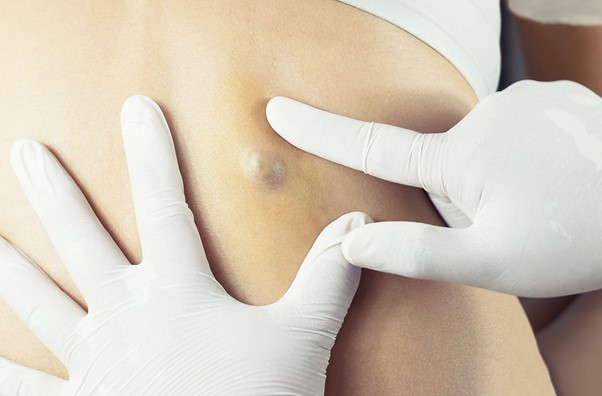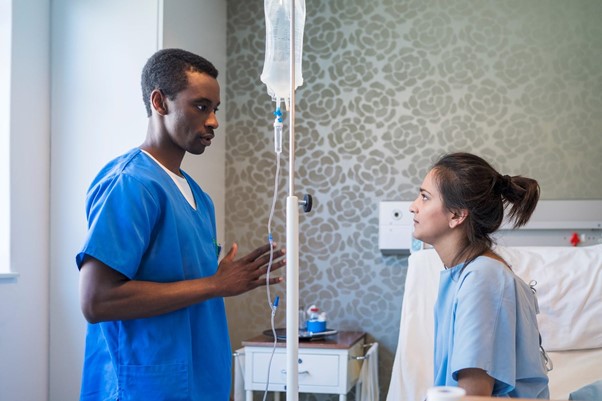
Recovery and Aftercare for Skin Lump & Cyst Surgery: Tips for Optimal Healing and Scar Management
Understanding Skin Surgery and the Recovery Process
Skin lump or cyst removal surgery is a procedure to remove lumps, bumps, or other irregularities in your skin. It can involve anything from removing benign cysts or moles to cancerous growths (malignant tumors).
Depending on the type of surgery and size of the lesion, the recovery process can vary.
Generally speaking, the wound will heal in several stages. During the first stage of healing, which usually lasts for a few days after surgery, your doctor may recommend that you keep an eye on the area and use a topical cream or ointment to help reduce inflammation.
It’s important to follow the instructions of your doctor carefully during this time.
The next stage of healing involves scarring, which can take several weeks or even months to heal.
During this time, it’s important to have the area clean and covered with a bandage in order to prevent and aid in healing. You may need to use a scar cream or ointment to help reduce the size of the scar.
Essential Tips for Optimal Healing After Surgery
During your recovery process, it’s important to follow your doctor’s instructions carefully and take any recommended medications as prescribed. Here are some additional tips to keep in mind:
Follow your plastic surgeon's instructions
Your plastic surgeon has been handling surgery-related complications for years and has acquired the skill to instruct you on how to take care of your skin after surgery. Therefore, you must follow their instructions to the letter to ensure optimal healing.

Protect the wound
It is important to keep the affected area covered with a gauze dressing or a skin patch to minimize the risk of infection. Always protect the wound from potential irritants and injury.
Keep your skin clean
It is crucial that you clean the skin around the wound regularly with a mild antiseptic cleanser. The wound can be cleaned using saline water for the first few days after the surgery.
Avoid exposure to direct sunlight
Direct sunlight exposure can be harmful to a healing wound. To avoid this, it is recommended that you wear protective long-sleeved clothing, avoid direct sunlight exposure and also use a good quality sunscreen recommended by your doctor.
Take sufficient rest
Rest is important for your body to heal quickly. Therefore, you should avoid engaging in strenuous activities for several days after your surgery.
Watch your diet
Consuming a well-balanced diet with sufficient protein and water can help promote healing after your surgery. Ensure that you consume enough vitamin C, magnesium, and iron to aid the recovery process.

Avoid smoking
Smoking reduces the level of oxygen in the bloodstream, which slows down the healing process. Therefore, smokers should avoid smoking after surgery for the best possible healing results.
Avoid soaking in a bathtub or swimming for a while
Swimming can be hazardous to a healing wound, so it is best to avoid any activities that involve immersion in water. Therefore, you should avoid soaking in a bathtub or swimming pool for at least 2-3 weeks.
Avoid excessively cold or hot temperatures
Excessive cold or heat can cause inflammation and damage the wounds, which can slow the healing process. It is therefore best to avoid prolonged exposure to both hot and cold temperatures.
Be patient
Complete recovery takes time, so it’s important to be patient with the process. Avoid touching, rubbing, or scratching the skin lump site, as this can delay the healing process.
Tips for Scar Management After Skin Lump Surgery
Once the wound has healed, it’s important to practice good scar management techniques in order to minimize the appearance of any scarring. Here are some tips for optimal scar management:
- Use sunscreen when exposed to direct sunlight.
- Avoid using over-the-counter creams and ointments that may irritate your skin.
- Consider using over-the-counter scar gels and creams that contain ingredients like aloe vera, vitamin E, or silicone to help reduce the size and appearance of scars.
- Massage the area gently with a soft cloth or silicone product in order to improve circulation and help fade the scar.
- Speak to your doctor about any additional treatments that may be available for reducing the appearance of scars.
When to Seek Professional Help Your Recovery Process
It’s important to keep an eye on the area and look out for any signs of infection or complications during your recovery process.

If you experience any redness, swelling, pain, or discharge from the wound site, it’s important to speak to your doctor as soon as possible.
Additionally, if you’re not happy with how the scar looks after healing has taken place, it’s best to seek professional help in order to discuss any additional treatments that may be available.
Conclusion
Skin lump surgery is a procedure to remove lumps, bumps, or other irregularities in your skin. It’s important to follow the instructions of your doctor carefully during the recovery process and use essential tips for optimal healing after surgery such as keeping the area clean and covered with bandages at all times.
Additionally, practice good scar management techniques like using sunscreen when exposed to direct sunlight, avoiding over-the-counter creams that may irritate the skin, and speaking to your doctor about any additional treatments if you are unhappy with how the scar looks after healing has taken place.
With careful attention throughout this entire process, you can ensure successful recovery from skin lump surgery.
Learn more.